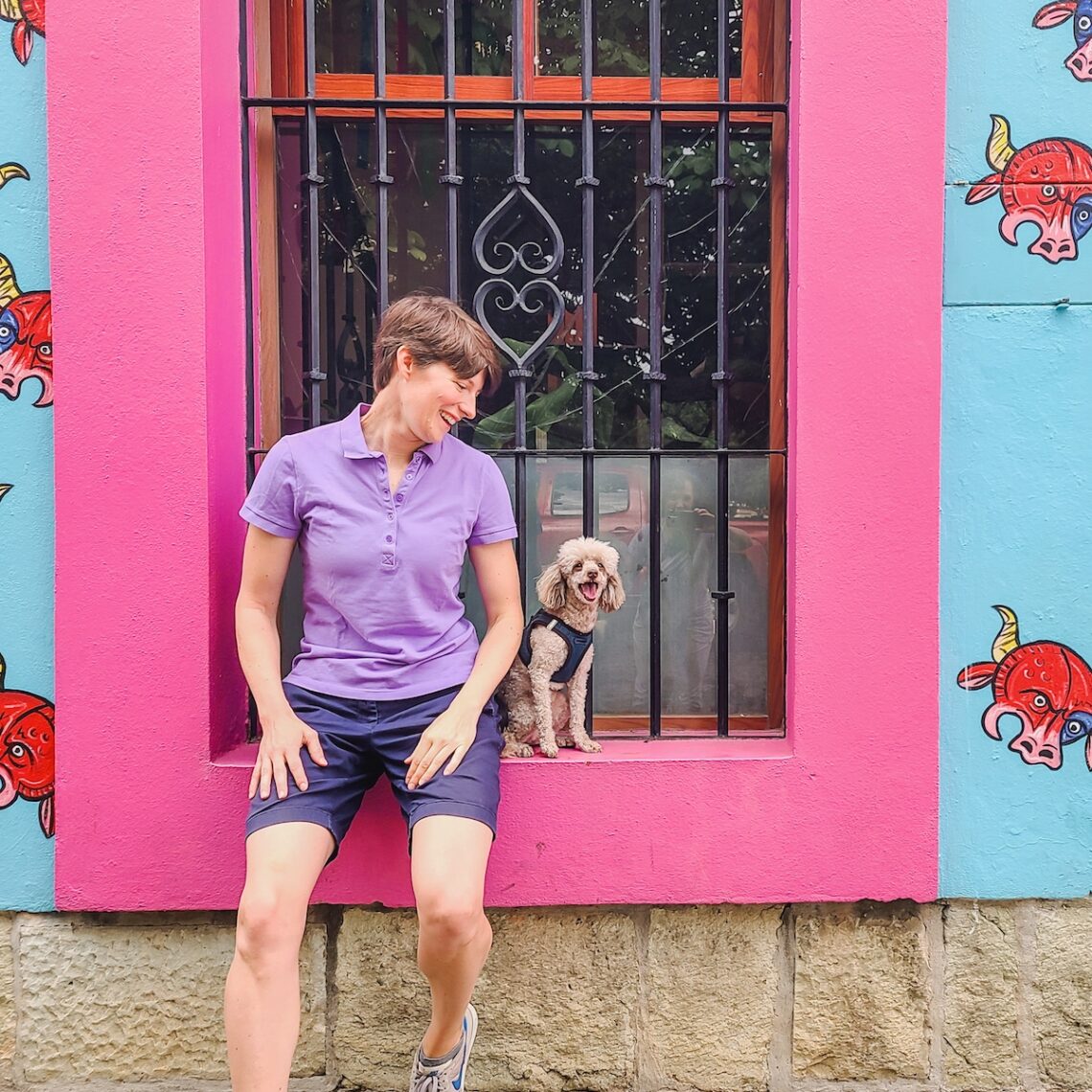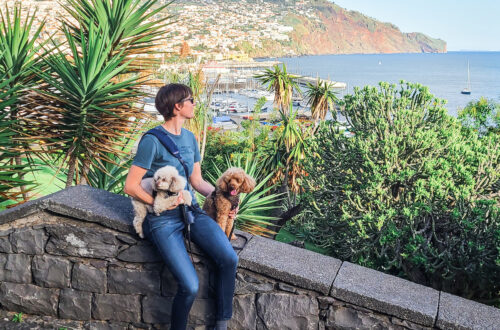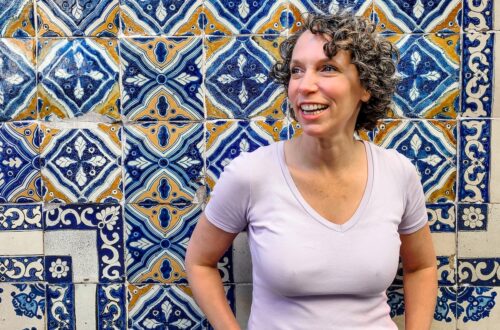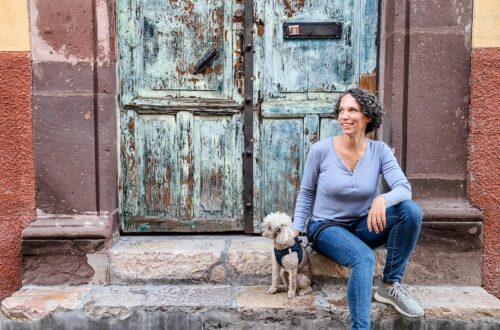
Why Mexico’s Top Foodie Destination is Worth the Trip
Our cost of living in Oaxaca City
We’re always on the hunt for authentic travel experiences; we don’t want our trip to be all about fancy restaurants and expensive tours. And we definitely don’t want to always be stuck paying tourist prices. Case in point: We had an incredible time in Mexico City but we were staying in super trendy, super expensive Roma Norte. We also had a great time in San Miguel de Allende but, of course, that’s a city well known for its large expat community and sky-high prices.
We were hoping that Oaxaca City would finally be the place where we could finally break out of the tourist bubble. This is a city that’s famous for its interesting history, indigenous cultures and, of course, really incredible, unforgettable food. Maybe this would be the place where we’d finally connect with the local culture and possibly even say goodbye to those tourist prices.
Now that we’ve reached the end of our month in Oaxaca — which also marks the end of our summer-long adventure in Mexico — we’re ready to take stock, starting with what we did for entertainment.

The historic centre of Oaxaca City was easy enough to explore on our own. Oaxaca isn’t exactly a small city but the historic centre does have a sleepy, small town feeling. Most of the bustle happens in the Zocolo, which is a large square at the heart of the city. Of course, it is a little touristy with all the vendors and tour hawkers but that’s just what you’d expect from a town square.
We also toured the important houses of worship in the city: Catedral Metropolitana de Oaxaca, Templo de Santo Domingo de Guzmán and Basílica de Nuestra Señora de la Soledad. Once we hit the big markets — Mercado Benito Juárez and Mercado 20 de Noviembre – we’d covered many of the top sights in the centre of town.
What we were most excited about was what we could find in the rest of the region.
Our first stop was the archeological site of Monte Alban, a significant pyramid complex that was occupied over a period of 1,500 years by a series of ancient civilisations, including the Mixtecs, Zapotecs and Olmecs. We rounded off the day by visiting local indigenous artisan villages, each one known for making traditional crafts.
We saw more crafts at the massive Sunday market of Tlacolula, along with mass-produced goods, prepared food, live animals and all kinds of produce. This market is a feast for the senses and is so large it took the better part of a morning to explore.
We had another day trip further afield to Hierve el Agua, the site of a petrified waterfall. We hiked from below the waterfall to the top where we were rewarded with natural mineral pools for swimming (we just dipped a toe in the water). That day ended with a tour of a mezcal distillery, which became more and more lively as the tastings escalated.
Of course, Oaxaca is famous for its food so we made sure to try the regional specialties. There are dozens of restaurants that offer high-end versions of Oaxacan dishes but we made sure to cover off the street food classics. We tried it all, from memelas and tlayudas to piedrazo and tamales; check our video for all the details. We had tried some of the dishes during our previous three months in Mexico but most of them were completely new to us.
Onto our accommodations, one of the things we’ve been really struggling with in Mexico is the cost of the Airbnbs. They always seem to cost a lot more than we would expect. Some of this has to do with the occupancy tax in Mexico. But it also seems like nice Airbnbs just cost way more than local rates.
In Oaxaca City, we went with a very simple, minimal apartment – certainly nothing like our last place in Mexico City. If you think that means it would be cheap, well, you’d be incorrect. Honestly we were a little surprised at how much a nicely designed but sparsely furnished apartment cost.
The kitchen was the most minimalist room with hardly any of the usual appliances. There was a small fridge, a two burner stove and a coffee machine — truly just the basics. The bedroom was tastefully put together with lots of natural light. And we really appreciated the large terrace with lounge chairs and a hammock. Check this video for the full tour.
With that, let’s talk costs, starting with entertainment. Certainly it’s possible to spend very little on entertainment just by walking around and taking in all the interesting neighbourhoods and markets. We did that but we also did a lot more — those day trips really add up. We spent $366 USD, which is the most we’ve ever spent on entertainment — but there was a very good reason for this. We weren’t just entertaining ourselves; we also hosted Gillian’s family in Oaxaca City for a couple weeks.
Since it was a large group, we needed to organize a van and a guide for those big excursions out of town.If it had just been the two of us, we would have kept things more simple (and inexpensive) and rented a car for a couple days.
Speaking of transportation, other than the trips out of town, we really didn’t need to spend much. Oaxaca is a really walkable city and we felt close to pretty much everything. We ended up spending just $21 USD on our cab from the airport and that was it.
Dining out was was a fun category this month. We really enjoyed trying all the interesting street food here but, of course, it wasn’t all street food. Oaxaca has a well-developed restaurant scene with something at every price point. We can see why this is Mexico’s foodie capital; these were some of the best restaurants that we ate at during our entire four months in Mexico. In total, dining out cost $426 USD and that included a meal or a snack out everyday.
We still ate a lot of meals at home. But we had kind of a struggle getting groceries. Gillian went to the Mercado de la Merced most for our produce; you saw us going there in our first day in Oaxaca video. And the produce was incredibly cheap — the cheapest that we encountered so far in Mexico. But we never found that one grocery store where we could cover off all the rest of our needs. Instead we had to go to different store: one for organic chicken and eggs, one for bulk goods, one for coffee and so on. Our total spend on groceries was $437 USD.
Finally, our Airbnb. A simple place, well designed but not a lot of frills. For this we paid $1,772 USD for the month, which I think was on the high side for what we got.
Generally, after spending four months in Mexico, we’re not seeing it as a low-cost destination.
If your point of reference is what you’d normally be paying at home in the US or Canada or Western Europe, then yes, money does go further here. But not as far as you might think. Likely the combination of pricey Airbnbs and many tempting restaurants has a lot to do with it.
Certainly your budget will go a lot further if you stick to street food, casual eats, low-cost apartments and more independent touring — which isn’t what we did at all. Our total for a very full visit to Oaxaca — great meals, daytrips, a stylish Airbnb — this came in at $3,022 USD. It’s not bad for how much we experienced but it’s still on the high side when compared to our monthly stays in Europe.
Of course, if you want to see some real spending, you can check out our time in Mexico City. As mentioned, we stayed in a very luxurious apartment in Roma Norte; we ate at incredible restaurants and went on unforgettable tours. If you want to see how much that set us back, you can take a look at highlights here.





2 Comments
Emily
How do your dogs do with fireworks?
Mexico is known for using fireworks in many of their celebrations. It is one of the main reasons I hesitate about heading there with our dogs. One of them is terrified of them. My understanding is you have to be in one of the more expat neighborhoods outside the city to avoid them, but we have a similar travel style to you and staying in the outskirts doesn’t work that well. So, I wondered if fireworks were an issue for you all
Our Freedom Years
That is an excellent question! One of our dogs could care less about fireworks; his main terror are the ceiling fans that appear in many restaurants in Mexico. We spent a lot of time covering his eyes as we entered restaurants. The other dog reacts strongly to fireworks and other sudden, loud noises. We found that San Miguel de Allende was a little challenging for him as there were period with frequent fireworks, particularly in the early mornings. We tried to otherwise provide a comforting, calm environment and certainly avoided the many loud celebrations that took place downtown. Generally our dogs have become used to being exposed to a wide variety of situations and we try to balance hectic environments with more calm experiences.